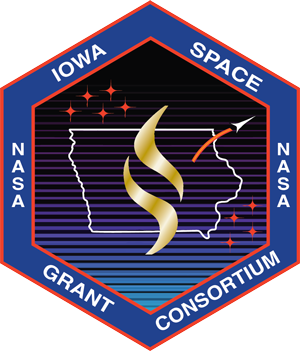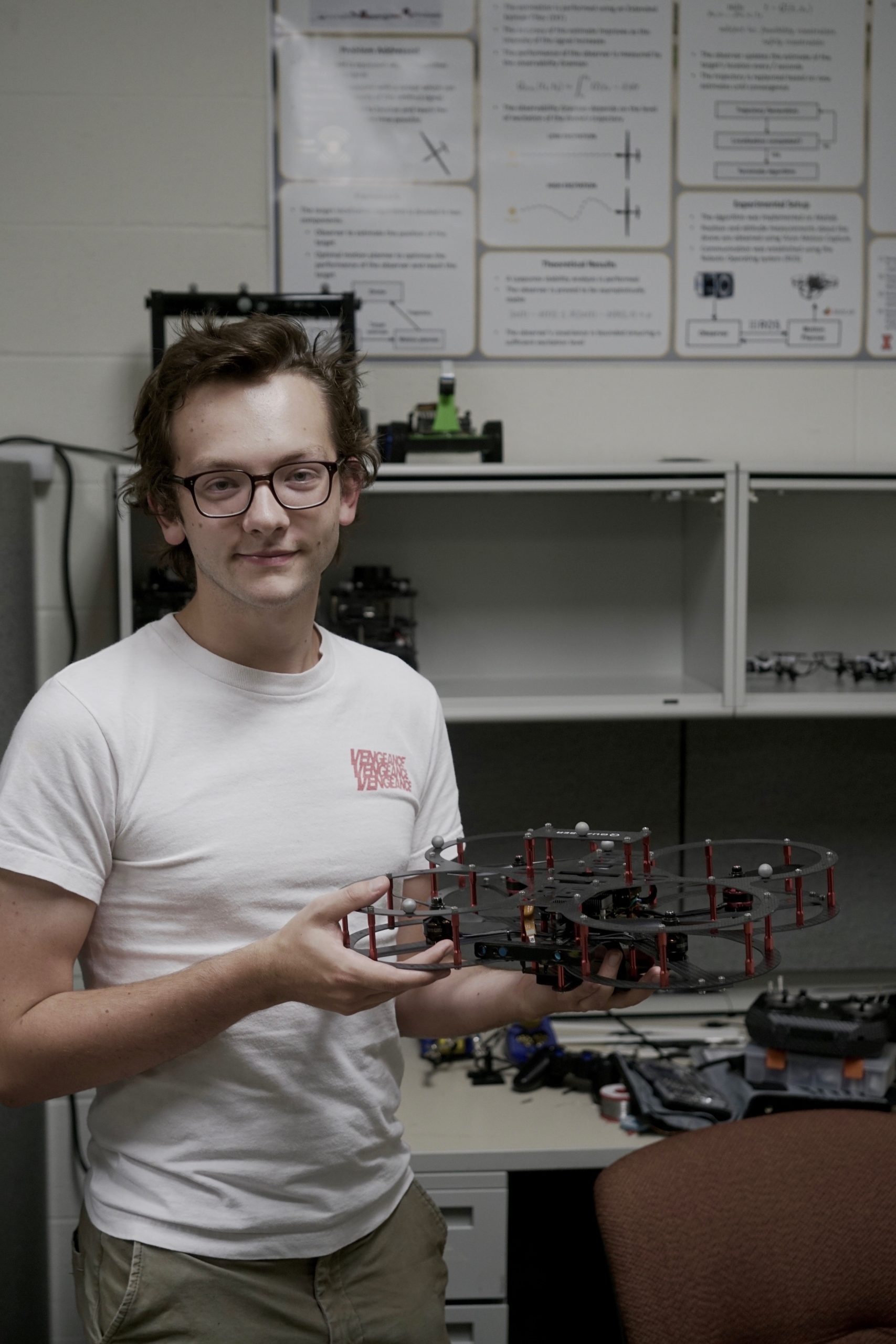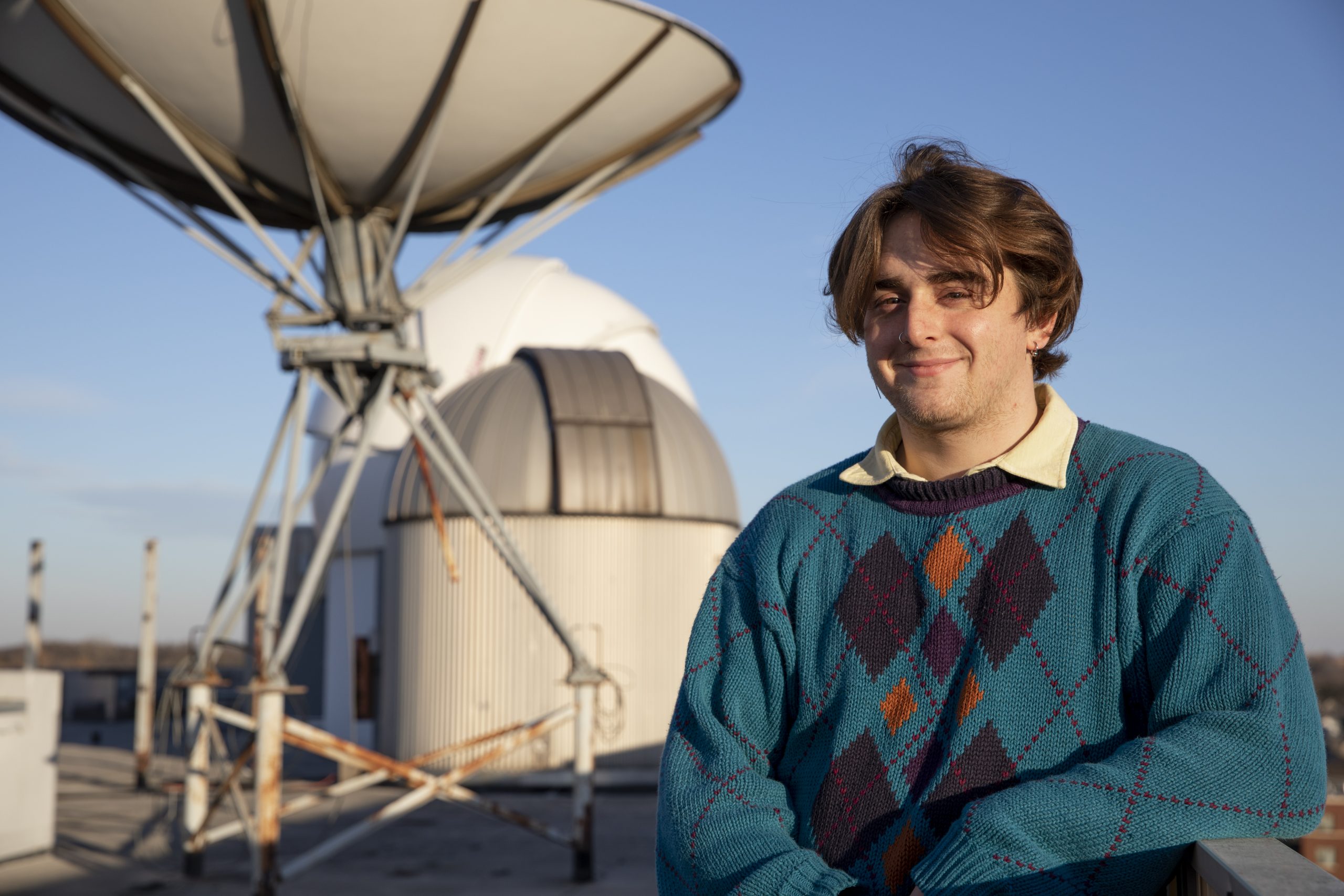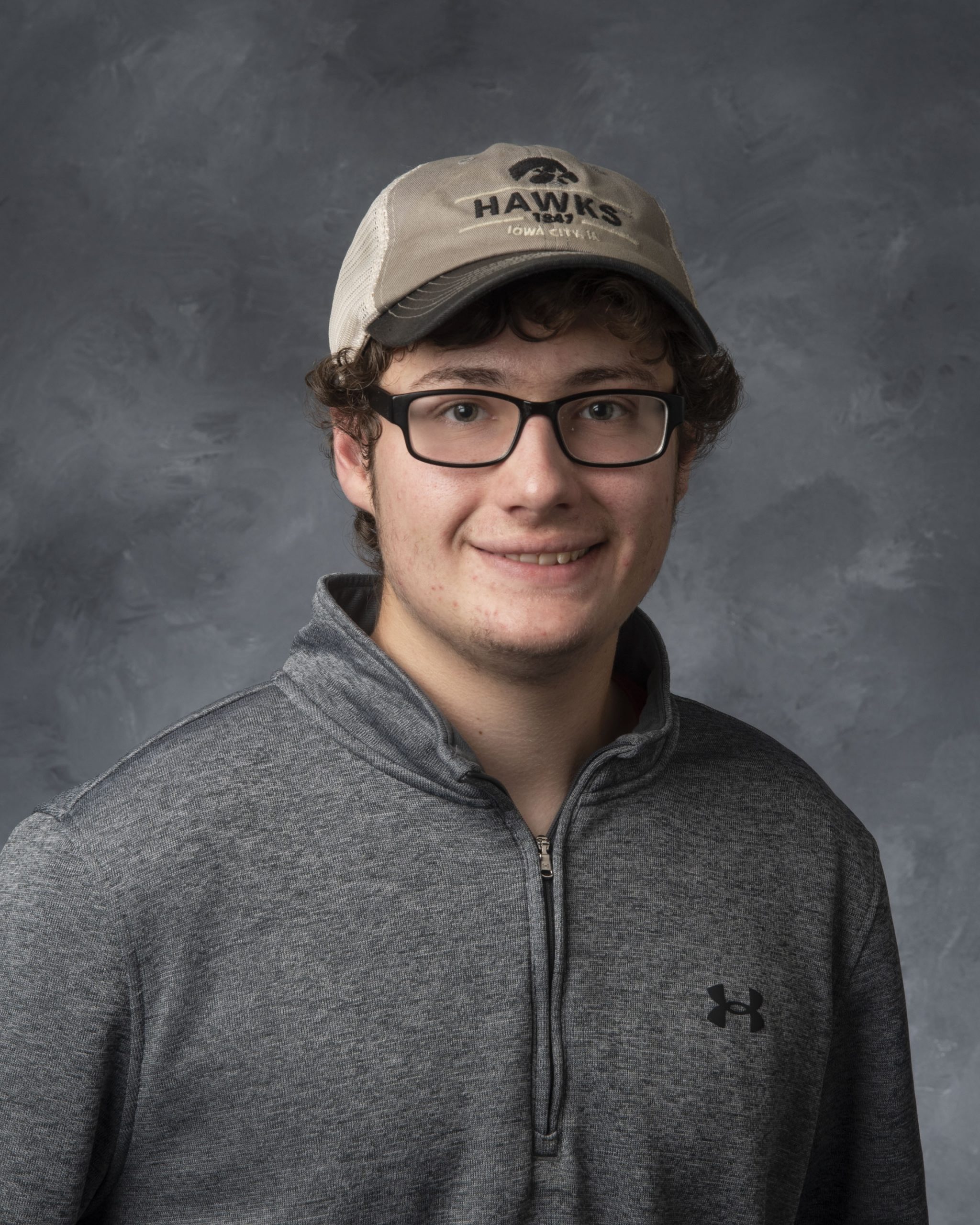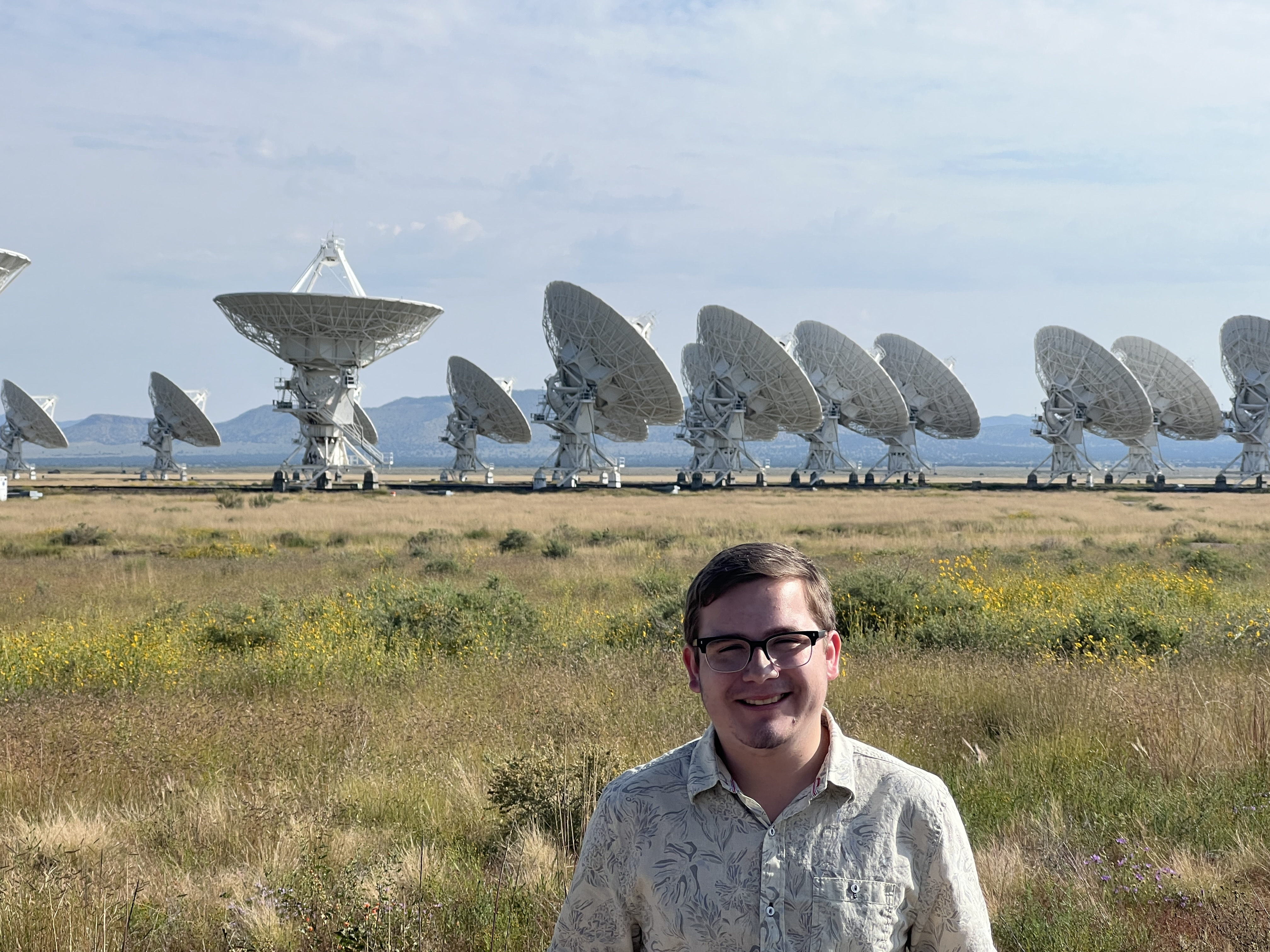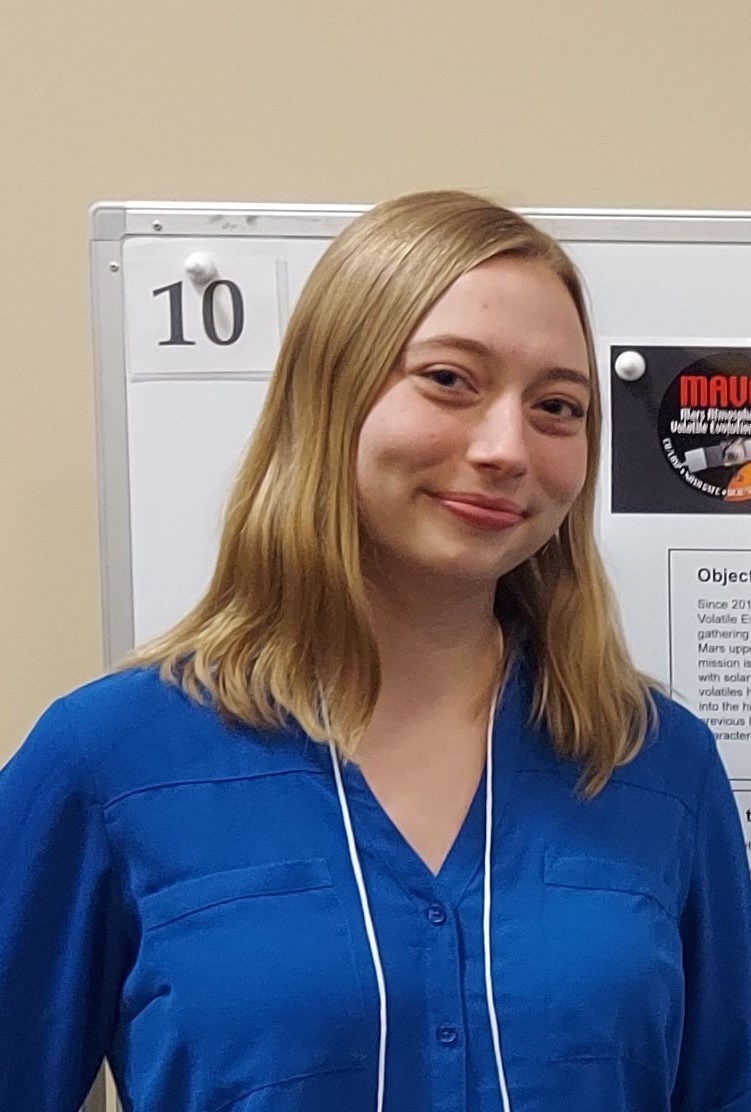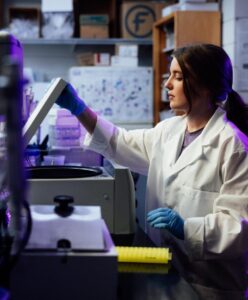 Moonmilk is a white substance mainly composed of calcium carbonate (CaCO3) that is often found in limestone caves. It is one of many mineral composites in Wind Cave National Park South Dakota and is thought to be formed by microbial activity. Some of the evidence supporting this hypothesis lies in the association of metabolically active microorganisms in moonmilk such as Macromonas bipunctata, a bacterium first discovered in caves over a hundred years ago. More recently, there is evidence that dry versus wet moonmilk harbor different bacterial communities (Shanae et al., 2020). We have collected our own samples of moonmilk from different areas within Wind Cave using sterile supplies to avoid cross-contamination.
Moonmilk is a white substance mainly composed of calcium carbonate (CaCO3) that is often found in limestone caves. It is one of many mineral composites in Wind Cave National Park South Dakota and is thought to be formed by microbial activity. Some of the evidence supporting this hypothesis lies in the association of metabolically active microorganisms in moonmilk such as Macromonas bipunctata, a bacterium first discovered in caves over a hundred years ago. More recently, there is evidence that dry versus wet moonmilk harbor different bacterial communities (Shanae et al., 2020). We have collected our own samples of moonmilk from different areas within Wind Cave using sterile supplies to avoid cross-contamination.  Each site had varying degrees of human exposure, from public tour routes to caverns only occasionally visited by park rangers. By extracting environmental DNA from these samples, we will then be able to measure microbial diversity. The resulting data set will allow us to estimate how much of the human microbiome transfers to moonmilk and whether there is a correlation between microbial diversity and the level of hydration in Wind Cave moonmilk. DNA will be extracted using the Qiagen PowerSoil Pro DNA Extraction kit followed by 16S rDNA PCR amplification and clone library construction to identify microbes. The results of this study will not only offer insights into the composition of microbial species in moonmilk, as well as their role in its formation, but will add to the larger genetic map of Wind Cave being constructed by the other students on my research team.
Each site had varying degrees of human exposure, from public tour routes to caverns only occasionally visited by park rangers. By extracting environmental DNA from these samples, we will then be able to measure microbial diversity. The resulting data set will allow us to estimate how much of the human microbiome transfers to moonmilk and whether there is a correlation between microbial diversity and the level of hydration in Wind Cave moonmilk. DNA will be extracted using the Qiagen PowerSoil Pro DNA Extraction kit followed by 16S rDNA PCR amplification and clone library construction to identify microbes. The results of this study will not only offer insights into the composition of microbial species in moonmilk, as well as their role in its formation, but will add to the larger genetic map of Wind Cave being constructed by the other students on my research team.
Gage MacLin – University of Iowa
This project aims to design and implement the guidance and control systems for various autonomous vehicles. Multi loop control will be used to calculate a trajectory that leads to a desired position, and then calculates the required actuation commands to reach that desired position. The work ahead lies in verifying the mathematical model of the vehicles, and then implementing various control theories and algorithms including adaptive control and trajectory tracking control. Once the control system is completed, it will be simulated extensively using MATLAB Simulink to prove robustness. Then, the control system will be implemented onto different autonomous vehicles for further testing.
Jeff Leiberton – University of Iowa
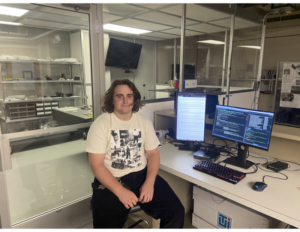 X-ray telescopes differ from optical telescopes in the sense that they must utilize grazing incidence mirrors to “skip” X-rays to the detector. To meet the performance requirements necessary to achieve NASA’s science goals, we must stack many thin (<1mm) X-ray mirrors together. However, thin mirrors are susceptible to stray loads, which distort the mirror and diminish its sensitivity. To address this problem, our group studies the fabrication and implementation of thin, adjustable X-ray mirrors. These mirrors are micro-electro-mechanical systems (MEMS) that utilize an array of addressable cells to correct distortions introduced in spaceflight and production. My research focuses primarily on the development and optimization of the algorithms used to correct the mirror distortions. These algorithms are essentially nonlinear, least-squares optimization solvers. I will use these algorithms to predict which voltages we must apply to each cell in order to optimize the performance of the mirror. We will then use these predictions to apply and measure corrections to a mirror prototype available to us at the University of Iowa.
X-ray telescopes differ from optical telescopes in the sense that they must utilize grazing incidence mirrors to “skip” X-rays to the detector. To meet the performance requirements necessary to achieve NASA’s science goals, we must stack many thin (<1mm) X-ray mirrors together. However, thin mirrors are susceptible to stray loads, which distort the mirror and diminish its sensitivity. To address this problem, our group studies the fabrication and implementation of thin, adjustable X-ray mirrors. These mirrors are micro-electro-mechanical systems (MEMS) that utilize an array of addressable cells to correct distortions introduced in spaceflight and production. My research focuses primarily on the development and optimization of the algorithms used to correct the mirror distortions. These algorithms are essentially nonlinear, least-squares optimization solvers. I will use these algorithms to predict which voltages we must apply to each cell in order to optimize the performance of the mirror. We will then use these predictions to apply and measure corrections to a mirror prototype available to us at the University of Iowa.
Yajatra Kulkarni – University of Iowa
 This project aims to extend strain-based kinematic shape sensing from 1-D beams to 2-D plates.
This project aims to extend strain-based kinematic shape sensing from 1-D beams to 2-D plates.
Kinematic shape sensing methods use discrete measurements of strain to infer structural deformations using purely geometric/kinematic models. This is computationally efficient, independent of structural material properties, and extremely accurate when applied to certain geometries. Previous efforts have focused upon the deformations of long, slender, beam-like bodies, which were dubbed “shape-sensing spars”. These spars were used as sensors by inserting them into flexible wings to track deformations and perform novel fluid-structure interaction experiments. A next step in novel shape sensing would be to extend the instrumentation from beam-like structures to 2-dimensional plates, which would allow structures like ship hulls, tank walls, or airplane fuselage panels to be monitored with unprecedented rigor.
This research focuses on extending a kinematic reconstruction algorithm to 2D applications and investigating optimal sensor placement and produce a prototype of an instrumented panel. Experiments will be performed to validate the kinematic reconstruction of both static and dynamic deformations imposed on the plate with known boundary conditions.
Jason Homann – University of Iowa
As the constellation satellite market is growing, there is a need to develop high precision fluxgate magnetometers. To start with this task, we want to be able to characterize some different types of magnetic noise that typical spacecraft might need to deal with. We measure the magnetic fields of simple dipoles, oscillating magnetic sources such as electric motors, and current carrying wires. If we know the magnetic fields of typical noise sources, then machine learning algorithms can be trained to filter out these signals. Therefore the only thing remaining in our data will be the geophysical signal that we want to measure. After creating and refining this method, we will not have to exert as much effort trying to create miniature, magnetically clean magnetometers and spacecraft.
Ali Goldensoph – Drake University
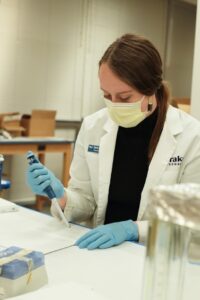 Radiation-induced DNA damage demands recognition as the ultimate insult to cosmonauts’ genetic material. Recently, we have identified a novel nuclear matrix metalloprotease (nMMP) activity possibly associated with DNA repair related to ‘Sample M’. In an effort to improve upon Sample M, we describe the optimization of nanoparticle encapsulation for the purified sample known as Compound MP. Nanoparticles are widely known drug delivery systems for improving pon a compound’s stability and allowing for widened functionality (de Alcantara Lemos et al., 2021). As a comparative measure, this protocol will be examined with existing commercial pharmaceutical agents Epinephrine and Nifedipine. Upon successful nanoparticle encapsulation, Compound MP will be examined further for relative DNA repair functionality.
Radiation-induced DNA damage demands recognition as the ultimate insult to cosmonauts’ genetic material. Recently, we have identified a novel nuclear matrix metalloprotease (nMMP) activity possibly associated with DNA repair related to ‘Sample M’. In an effort to improve upon Sample M, we describe the optimization of nanoparticle encapsulation for the purified sample known as Compound MP. Nanoparticles are widely known drug delivery systems for improving pon a compound’s stability and allowing for widened functionality (de Alcantara Lemos et al., 2021). As a comparative measure, this protocol will be examined with existing commercial pharmaceutical agents Epinephrine and Nifedipine. Upon successful nanoparticle encapsulation, Compound MP will be examined further for relative DNA repair functionality.
Walter (Will) Golay – University of Iowa
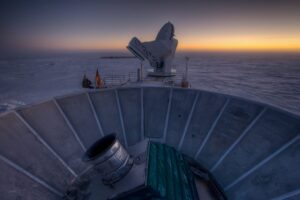 The latest cosmologies predict inflation in the early universe to have imprinted a signature polarization pattern in the cosmic microwave background (CMB). The BICEP/Keck Array is a collection of telescopes that aim to detect this unique pattern and constrain inflationary models. Precision measurements of the CMB require a thorough understanding of instrumental systematics. Determining the differential beam between pairs of orthogonal detectors is essential to mitigating the effects of temperature-to-polarization leakage, a significant source of systematic error. The first step in characterizing the beams is the demodulation of a signal from observing a chopped source. Here we summarize previously implemented demodulation techniques and propose new methodologies. We will further benchmark and compare the performance of each demodulator on simulated calibration time-streams and the latest data from the BICEP/Keck Array experiments. We find that a Fourier-space deconvolutional approach was most successful at accurately characterizing the beam, improving our understanding of the instrument to mitigate the effects of temperature-to-polarization leakage. With this information, we intend to continue developing this new approach for eventual implementation into the final science analysis pipeline.
The latest cosmologies predict inflation in the early universe to have imprinted a signature polarization pattern in the cosmic microwave background (CMB). The BICEP/Keck Array is a collection of telescopes that aim to detect this unique pattern and constrain inflationary models. Precision measurements of the CMB require a thorough understanding of instrumental systematics. Determining the differential beam between pairs of orthogonal detectors is essential to mitigating the effects of temperature-to-polarization leakage, a significant source of systematic error. The first step in characterizing the beams is the demodulation of a signal from observing a chopped source. Here we summarize previously implemented demodulation techniques and propose new methodologies. We will further benchmark and compare the performance of each demodulator on simulated calibration time-streams and the latest data from the BICEP/Keck Array experiments. We find that a Fourier-space deconvolutional approach was most successful at accurately characterizing the beam, improving our understanding of the instrument to mitigate the effects of temperature-to-polarization leakage. With this information, we intend to continue developing this new approach for eventual implementation into the final science analysis pipeline.
Pedro Salazar Garcia – Iowa State University
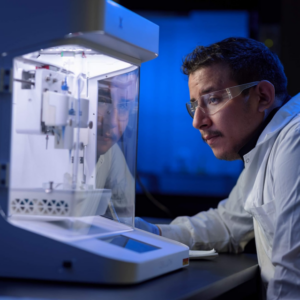 Graphene is a 2D sheet of carbon atoms with diverse chemical and physical properties, such as high electrical conductivity and mechanical strength, that is suitable for large-scale production. This material has been widely studied over the past decade and is commonly used for the development of electrochemical sensors, such as ion-selective electrodes (ISEs), which measure the activity of an ion in a solution. Current ISEs are designed for the detection of different ions in biochemical and biophysical research. However, these ISEs suffer from low signal-to-noise ratio and poor long-term stability, making it difficult to apply in complex matrices like food, soil, and water.
Graphene is a 2D sheet of carbon atoms with diverse chemical and physical properties, such as high electrical conductivity and mechanical strength, that is suitable for large-scale production. This material has been widely studied over the past decade and is commonly used for the development of electrochemical sensors, such as ion-selective electrodes (ISEs), which measure the activity of an ion in a solution. Current ISEs are designed for the detection of different ions in biochemical and biophysical research. However, these ISEs suffer from low signal-to-noise ratio and poor long-term stability, making it difficult to apply in complex matrices like food, soil, and water.
This work focuses on fabricating laser-induced graphene (LIG) on a polyimide substrate using a CO2 laser (wavelength (λ) = 10.6 μm), and electrochemically depositing platinum nanoparticles to increase the stability (signal-to-noise ratio) of LIG based ISEs. After the nanoparticle deposition, the LIG is functionalized with a polymer-based ion-selective membrane that is selective to ions of interest in fertilizer monitoring (nitrate, ammonium, and potassium). This research hypothesizes that the LIG ISEs utilizing platinum nanoparticles will increase the long-term stability and signal-to-noise ratio allowing for the development of sensors capable of monitoring fertilizer levels for an entire growing season. LIG ISEs can be scaled due to the ease of fabrication, however, further work is needed to study the practical application of these sensors regarding their durability, stability in real samples, and selectivity over commonly interfering ions.
Jeffrey Carlson – University of Northern Iowa
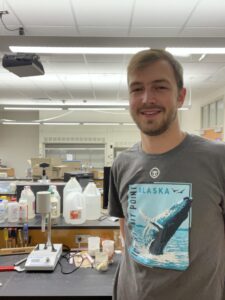 One of the many challenges that face any extraterrestrial mission is the need for high strength while maintaining a low weight during transport to reduce cost. Our academic research consists of creating materials with high strength-to-weight ratio from nanocellulose for extraterrestrial applications. Nanocellulose can be synthesized from cellulose, which is the most common organic polymer found in nature. Nanocellulose is synthesized by applying ultrasonic agitation to a mixture of purified cellulose in water. The result is a very viscous suspension of nanocellulose and water which is dried to form solids. These solids have a strength-to-weight ratio 8 times greater than steel while also remaining stiff. The main problem with making nanocellulose solids is the inability to control the shape of the solid being created and the abundance of cracks and impurities running throughout the solid which reduces the strength. The research currently involves combining nanocellulose of varying sizes, from 1 nanometer to 1 micron, to create a composite which, upon drying, has a lower density while still maintaining strength. During the drying process a nanocellulose suspension will lose 90% of the water, but when combining differing sizes of nanocellulose, volume loss is cut down to 20% which reduces strain on the material when drying leading to less cracking and better shape retention. The solids created are machinable and suitable for building structures. Using nanocellulose for planetary missions would negate the need for bringing building materials, reducing weight and thus reducing fuel needed for transport.
One of the many challenges that face any extraterrestrial mission is the need for high strength while maintaining a low weight during transport to reduce cost. Our academic research consists of creating materials with high strength-to-weight ratio from nanocellulose for extraterrestrial applications. Nanocellulose can be synthesized from cellulose, which is the most common organic polymer found in nature. Nanocellulose is synthesized by applying ultrasonic agitation to a mixture of purified cellulose in water. The result is a very viscous suspension of nanocellulose and water which is dried to form solids. These solids have a strength-to-weight ratio 8 times greater than steel while also remaining stiff. The main problem with making nanocellulose solids is the inability to control the shape of the solid being created and the abundance of cracks and impurities running throughout the solid which reduces the strength. The research currently involves combining nanocellulose of varying sizes, from 1 nanometer to 1 micron, to create a composite which, upon drying, has a lower density while still maintaining strength. During the drying process a nanocellulose suspension will lose 90% of the water, but when combining differing sizes of nanocellulose, volume loss is cut down to 20% which reduces strain on the material when drying leading to less cracking and better shape retention. The solids created are machinable and suitable for building structures. Using nanocellulose for planetary missions would negate the need for bringing building materials, reducing weight and thus reducing fuel needed for transport.
Susanne Byrd – University of Iowa
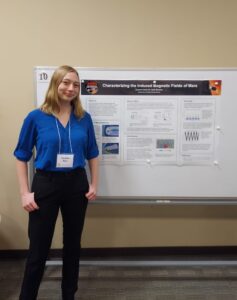 When charged particles from the solar wind interact with a planet’s atmosphere it induces a magnetic field. This research project aims to study this phenomenon at Mars and compare it to prior data from Venus to examine how planet-specific properties affect the interaction.
When charged particles from the solar wind interact with a planet’s atmosphere it induces a magnetic field. This research project aims to study this phenomenon at Mars and compare it to prior data from Venus to examine how planet-specific properties affect the interaction.
Since 2014, NASA’s MAVEN (Mars Atmosphere and Volatile EvolutioN) spacecraft, which orbits Mars, has been gathering data to observe how the solar wind interacts with Mars’ upper atmosphere. The purpose of the MAVEN mission is to research the upper atmosphere’s interactions with solar wind to gain an understanding of how loss of volatiles has progressed through time. This gives insight into the history of the planet’s atmosphere, climate, and previous habitability. Our research is focused on characterizing the planet’s induced magnetic field. We aim to assess how the induced magnetic fields behave under different solar wind conditions and solar zenith angles, and additionally, understand how planet-specific properties (such as Mars crustal magnetism) alter the formation and structure of the magnetic fields. Additionally, We use data from the Pioneer Venus Orbiter to compare induced magnetic fields at Venus with those at Mars.
